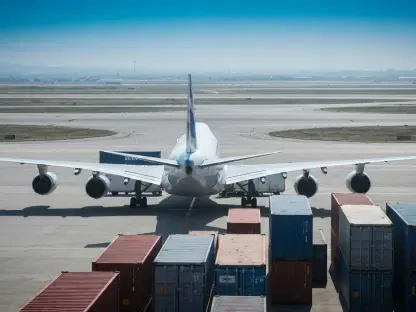Setting the Stage: A Tariff Shockwave in the Trucking Sector
Picture a trucking industry already strained by declining freight rates, now facing a seismic shift with President Donald Trump’s announcement of a 25% tariff on heavy- and medium-duty trucks, effective November 1. This policy, revealed through a Truth Social post on October 6, emerges as a pivotal challenge for an industry critical to the U.S. economy, where supply chains heavily rely on imports and domestic production lags behind. The stakes couldn’t be higher. This market analysis aims to dissect the implications of this tariff, exploring current trends, data-driven insights, and future projections. The goal is to provide clarity on how this decision could reshape costs, trade dynamics, and manufacturing landscapes in the trucking sector.
Diving Deep: Market Trends and Projections Under the Tariff Policy
Import Dependency: A Vulnerable Foundation Exposed
The U.S. trucking market stands on shaky ground due to its significant reliance on imported vehicles, particularly from Mexico and Canada. Industry data indicates that over 90% of truck imports originate from these neighboring countries, comprising between 42% and 50% of heavy trucks in the domestic market. This dependency poses a stark challenge as the 25% tariff threatens to inflate costs dramatically. With domestic manufacturers unable to scale production rapidly, businesses may face immediate price hikes, passing the burden onto consumers. The ripple effect could strain logistics networks, already under pressure from softening freight demand, creating a bottleneck in an industry ill-prepared for such a disruption.
Cost Escalation vs. Job Creation: A Market Tug-of-War
Beyond supply chain concerns, the tariff ignites a polarized debate over economic trade-offs within the market. On one hand, labor groups like the United Auto Workers support the measure, pointing to a 40% surge in heavy truck imports since the inception of NAFTA. They argue that incentivizing domestic production could spark job growth, revitalizing American manufacturing hubs. On the other hand, industry analysts caution that higher costs could cripple small businesses and disrupt consumer markets, especially in sectors reliant on trucking. This tension highlights a fractured market outlook, where short-term financial pain might clash with long-term employment gains, leaving stakeholders divided on the tariff’s ultimate value.
Policy Uncertainty: A Cloud Over Market Planning
Adding to the market complexity is the lack of clarity surrounding the tariff’s implementation. Originally slated for October 1 alongside other levies on furniture and pharmaceuticals, the truck tariff’s delay to November 1 came without detailed justification or formal documentation. The absence of official guidelines from the White House creates a planning vacuum for businesses, unsure whether the policy targets specific countries or applies universally. This uncertainty dampens market confidence, as companies hesitate to adjust supply chains or pricing strategies. Without transparent communication, the risk of missteps grows, potentially amplifying economic fallout across the trucking sector.
Trade Relations at Risk: A Broader Market Perspective
Shifting focus to international dynamics, the tariff could strain trade relationships with key partners like Mexico and Canada, whose exports dominate the U.S. truck market. Retaliatory measures from these nations remain a plausible threat, which might escalate into broader trade disputes affecting multiple industries. Market projections suggest that such friction could lead to higher costs for raw materials and components, further squeezing profit margins for American firms. While the policy seeks to bolster domestic interests, the collateral damage to trade alliances may undermine its effectiveness, creating a volatile environment for cross-border commerce in the coming years.
Future Outlook: Reshoring and Technological Shifts
Looking ahead, the tariff may catalyze emerging trends like reshoring within the trucking industry. Market forecasts indicate a potential uptick in investments toward domestic production facilities, driven by the need to circumvent import costs. Simultaneously, advancements in automation and manufacturing technology could help bridge production gaps, though scaling these innovations will take time. Analysts predict that over the next two years, from now to 2027, the market might see a gradual shift toward self-reliance, albeit at the expense of near-term price surges. The challenge lies in whether these long-term benefits can outweigh immediate disruptions, shaping a critical turning point for industry resilience.
Reflecting on the Analysis: Strategic Paths Forward
Looking back, this market analysis uncovered the multifaceted impacts of the 25% truck tariff, from exposed import dependencies to strained trade relations and uncertain policy rollouts. The examination revealed a sector at a crossroads, balancing the promise of job creation against the reality of cost escalation. For industry stakeholders, the path forward demands strategic adaptation—diversifying supply chains to mitigate import risks emerges as a priority, alongside forging partnerships with domestic manufacturers to build capacity. Policymakers are urged to deliver clear, phased implementation plans to stabilize market expectations. As the trucking sector navigates this tariff-driven landscape, proactive collaboration and innovation stand out as essential tools to transform challenges into sustainable growth opportunities.









